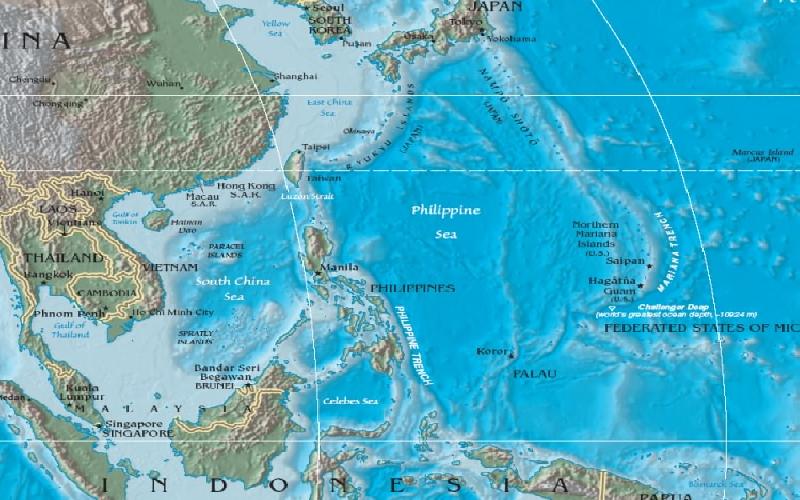Philippines Geography Has Advantages As Well As Disadvantages

Image Source - https://commons.wikimedia.org/wiki/File:Philippine_Sea_location.jpg
Philippines is very strategically located archipelago country. As such it comes with its own set of geographical advantages and disadvantages. Philippines geography is such that strategically it becomes very important for the rest of the world. Below we have discussed advantages and disadvantages of Philippines geographical location that must know about.
The Philippines is located in the Northern-side of the globe. It is between the equator and the Tropic of Cancer. As a Southeast Asian country, the Philippines geographic location is very important to the rest of the world. Its strategic location can become the center for distribution of different kinds of goods and a trading post for the rest of the Southeast Asian countries. This is because the sea area of the country is a main route of marine vessels as well as an International route for commercial airplanes.
The strategic location of the Philippines is one of the main reasons why it became the center of communication, as well as center for livelihood in the whole Southeast Asian regions in the past.
But the Philippines is an archipelago consisting of more than 7,000 small and big islands that were mostly scattered in the banks of the Pacific Ocean. Because of this, it has some advantages wherein it poses some problems for the country.
The scattered positions of the islands hinder the country to fully achieve development as well as the peace and order.
Philippines Geographical Advantages and Disadvantages
- The communication and transportation is very slow. Because of the scattered islands that make up the country, this becomes a hindrance to fully communicate fast in the whole archipelago.
- The Philippines government is not able to fully support and manage the areas that are far, especially those that are located in the far mountainous provinces. The center of the government is far from these regions, therefore, they are not able to pour their immediate support in terms of services pertaining to livelihood, education, as well as their grievances and overall problem of the community.
- Because the islands are scattered, it needs a big and huge number of armed forces to defend its territories up to the smallest island in the Philippines. The armed forces who will look after the peace and order of the whole country also needs the appropriate logistics such as weapons, ships, airplanes, etc. This problem is aggravated due to the fact that the government do not have enough budgets to supply these needed logistics.
- There are different cultures, regional dialects, and way of living by the different community groups living in different islands in the Philippines. Because of Philippines geography, it becomes difficult to unite all of these groups in order to have a full unity support in the whole country.
- There is also the problem of insufficient infrastructure such as roads, bridges, docks, airports and electricity in the far areas of the country. Because of this, it is difficult for the government to reach out to all the Filipinos to give basic needs such as health, education, and livelihood programs. We strongly felt this problem when government and non-government organizations needs to send “relief goods” to the areas who were struck by natural calamities such as typhoons, earthquakes, etc.
- And lastly, because Philippines has a wide range of sea around the archipelago. it becomes an open area for anyone who wanted to come via the sea. This causes the problem of smuggling and illegal importing and exporting of goods to and from the country. The effect is that no appropriate taxes were imposed and the government losses revenue sources.
Let us know how you like this article. Like it and Rate it below.
36.14K
5
18
Thanks for rating this article
3.2 stars - by
18 user(s)

Where I belong...New ways to contribute to humanity by posting relevant blogs and articles. Back from the grave..
Related Articles
7.87K
Funeral tradition and custom are unique in Philippines. They may be religious or non religious and sometimes even superstitious.
3.8K
Twenty years after Magellan’s Fleet landed in the Philippines Archipelago, the government of Spain has sent another expedition coming from Mexico. This time, the expedition was headed by Legazpi with the sole mission of invading the whole country.
582
The Philippines was invited by Foreign Minister Arita of Japan to take part of their program called Greater East Asia Co-Prosperity Sphere. And because our country’s citizen doesn’t want to be under a foreign occupation, the government officials did not believe it and thus did not join the invitation of the Japanese Government..

